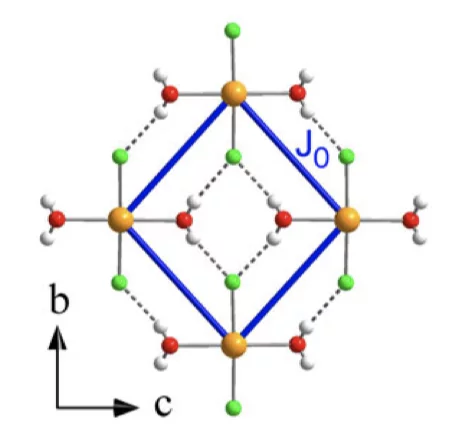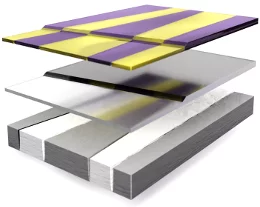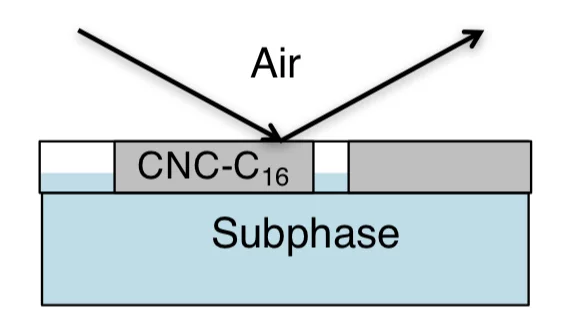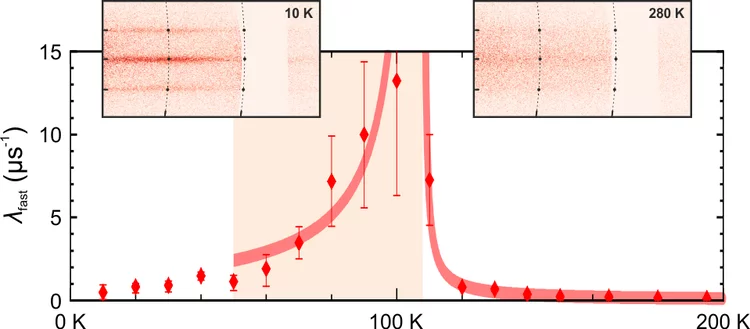Detailed polarization measurements of the prompt emission of five gamma-ray bursts
Gamma-ray bursts (GRBs) are the strongest explosions in the Universe since the Big Bang. They are believed to be produced either in the formation of black holes at the end of massive star evolution or the merging of compact objects.
Magnetism in semiconducting molybdenum dichalcogenides
Transition metal dichalcogenides (TMDs) are interesting for understanding the fundamental physics of two-dimensional (2D) materials as well as for applications to many emerging technologies, including spin electronics.
Time-Reversal Symmetry Breaking in Re-Based Superconductors
To trace the origin of time-reversal symmetry breaking (TRSB) in Re-based superconductors, we performed comparative muon-spin rotation and relaxation (μSR) studies of superconducting noncentro-symmetric Re0.82Nb0.18 (Tc=8.8 K) and centrosymmetric Re (Tc=2.7 K).
First Observation of P-odd γ Asymmetry in Polarized Neutron Capture on Hydrogen
We report the first observation of the parity-violating gamma-ray asymmetry Aγnp in neutron-proton capture using polarized cold neutrons incident on a liquid parahydrogen target at the Spallation Neutron Source at Oak Ridge National Laboratory.
Poling of an artificial magneto-toroidal crystal
Although ferromagnetism is known to be of enormous importance, the exploitation of materials with a compensated (for example, antiferromagnetic) arrangement of long-range ordered magnetic moments is still in its infancy. Antiferromagnetism is more robust against external perturbations, exhibits ultrafast responses of the spin system and is key to phenomena such as exchange bias, magnetically induced ferroelectricity or certain magnetoresistance phenomena.
A manganese hydride molecular sieve for practical hydrogen storage under ambient conditions
A viable hydrogen economy has thus far been hampered by the lack of convenient hydrogen storage solutions for long hauls and transportation/delivery infrastructure. Current approaches require high pressure and/or complex heat management systems to achieve acceptable storage densities. Development of hydrogen storage solutions operating at near ambient conditions can mitigate the complexity, cost and safety perception issues currently hindering the hydrogen economy.
Multiple-q noncollinear magnetism in an itinerant hexagonal magnet
Multiple-q spin order, i.e., a spin texture characterized by a multiple number of coexisting magnetic modulation vec- tors q, has recently attracted attention as a source of nontrivial magnetic topology and associated emergent phenome- na. One typical example is the triple-q skyrmion lattice state stabilized by Dzyaloshinskii-Moriya interactions in noncentrosymmetric magnets, while the emergence of various multiple-q states of different origins is expected according to the latest theories.
Adsorption and Interfacial Layer Structure of Unmodified Nanocrystalline Cellulose at Air/Water Interfaces
Nanocrystalline cellulose (NCC) is a promising biological nanoparticle for the stabilization of fluid interfaces, which is however poorly understood due to the inability to form controlled NCC interfacial layers. Herein we present parameters that allow the adsorption of unmodified NCC at the air-water (A/W) interface. Initial NCC adsorption is limited by diffusion, followed by monolayer saturation and decrease in surface tension at the time scale of hours.
Linking Structure to Dynamics in Protic Ionic Liquids: A Neutron Scattering Study of Correlated and Single-Particle Motions
Coupling between dynamical heterogeneity of ionic liquids and their structural periodicity on different length-scales can be directly probed by quasielastic neutron scattering with polarization analysis. The technique provides the tools to investigate single-particle and cooperative ion motions separately and, thus, dynamics of ion associations affecting the net charge transport can be experimentally explored.
Charges enter the ice age
Scattering experiments establish the partly disordered material CsNiCrF6 as the first verified example of a charge ice — and show that it supports Coulomb phases with correlations in three different degrees of freedom.
Design of magnetic spirals in layered perovskites: Extending the stability range far beyond room temperature
In insulating materials with ordered magnetic spiral phases, ferroelectricity can emerge owing to the breaking of in- version symmetry. This property is of both fundamental and practical interest, particularly with a view to exploiting it in low-power electronic devices. Advances toward technological applications have been hindered, however, by the rel- atively low ordering temperatures Tspiral of most magnetic spiral phases, which rarely exceed 100 K.
Rolling dopant and strain in Y-doped BiFeO3 epitaxial thin films for photoelectrochemical water splitting
We report significant photoelectrochemical activity of Y-doped BiFeO3 (Y-BFO) epitaxial thin films deposited on Nb:SrTiO3 substrates. The Y-BFO photoanodes exhibit a strong dependence of the photocurrent values on the thickness of the films, and implicitly on the induced epitaxial strain.
Dynamic volume magnetic domain wall imaging in grain oriented electrical steel at power frequencies with accumulative high-frame rate neutron dark-field imaging
The mobility of magnetic domains forms the link between the basic physical properties of a magnetic material and its global characteristics such as permeability and saturation field. Most commonly, surface domain structure are studied using magneto-optical Kerr microscopy. The limited information depth of approx. 20 nanometers, however, allows only for an indirect interpretation of the internal volume domain structures.
Dynamics of the Coordination Complexes in a Solid-State Mg Electrolyte
Coordination complexes of magnesium borohydride show promising properties as solid electrolytes for magnesium ion batteries and warrant a thorough microscopic description of factors governing their mobility properties. Here, the dynamics of Mg(BH4)2-diglyme0.5 on the atomic level are investigated by means of quasielastic neutron scattering supported by density functional theory calculations and IR and NMR spectroscopy.
Multiple Coulomb phase in the fluoride pyrochlore CsNiCrF6
The Coulomb phase is an idealized state of matter whose properties are determined by factors beyond conventional consid- erations of symmetry, including global topology, conservation laws and emergent order. Theoretically, Coulomb phases occur in ice-type systems such as water ice and spin ice; in dimer models; and in certain spin liquids. However, apart from ice-type systems, more general experimental examples are very scarce.
Observation of the out-of-plane magnetization in a mesoscopic ferromagnetic structure superjacent to a superconductor
The geometry of magnetic flux penetration in a high temperature superconductor at a buried interface was imaged using element-specific x-ray excited luminescence. We performed low tem- perature observation of the flux penetration in YBa2Cu3O7–δ (YBCO) at a buried interface by imaging of the perpendicular magnetization component in square Permalloy (Py) mesostructures patterned superjacent to a YBCO film.
Evidence of a Coulomb-Interaction-Induced Lifshitz Transition and Robust Hybrid Weyl Semimetal in Td-MoTe2
Using soft x-ray angle-resolved photoemission spectroscopy we probed the bulk electronic structure of Td-MoTe2. We found that on-site Coulomb interaction leads to a Lifshitz transition, which is essential for a precise description of the electronic structure. A hybrid Weyl semimetal state with a pair of energy bands touching at both type-I and type-II Weyl nodes is indicated by comparing the experimental data with theoretical calculations.
Thermal Critical Points and Quantum Critical End Point in the Frustrated Bilayer Heisenberg Antiferromagnet
We consider the finite-temperature phase diagram of the S=1/2 frustrated Heisenberg bilayer. Although this two-dimensional system may show magnetic order only at zero temperature, we demonstrate the presence of a line of finite-temperature critical points related to the line of first-order transitions between the dimer-singlet and -triplet regimes.
Finite-temperature critical points and quantum critical end point in a 2D magnet
The Mermin–Wagner theorem has long told us that in two dimensions a continuous symmetry can be broken, allowing a finite order parameter, only at zero temperature. Now PSI theorist Bruce Normand, working with colleagues in Aachen, Amsterdam, Lausanne and Paris, has circumvented this rule. The team was considering the thermodynamics
Disordered skyrmion phase stabilized by magnetic frustration in a chiral magnet
Magnetic skyrmions are vortex-like topological spin textures often observed to form a triangular-lattice skyrmion crystal in structurally chiral magnets with the Dzyaloshinskii-Moriya interaction. Recently, β-Mn structure-type Co-Zn-Mn alloys were identified as a new class of chiral magnet to host such skyrmion crystal phases, while β-Mn itself is known as hosting an elemental geometrically frustrated spin liquid.
Quantum magnets under pressure
The demonstration that applied pressure can substantially change – rather than merely tweak – the properties of a metal–organic quantum magnet indicates a route to designing quantum materials with tailored properties.
Solid deuterium surface degradation at ultracold neutron sources
Solid deuterium (sD2) is used as an efficient converter to produce ultracold neutrons (UCN). Itis known that the sD2 must be sufficiently cold, of high purity and mostly in its ortho-state in order to guarantee long lifetimes of UCN in the solid from which they are extracted into vacuum.
Giant Pressure Dependence and Dimensionality Switching in a Metal-Organic Quantum Antiferromagnet
We report an extraordinary pressure dependence of the magnetic interactions in the metal-organic system [CuF2(H2O)2]2 pyrazine. At zero pressure, this material realizes a quasi-two-dimensional spin-1/2 square-lattice Heisenberg antiferromagnet. By high-pressure, high-field susceptibility measurements we show that the dominant exchange parameter is reduced continuously by a factor of 2 on compression.
Multiferroics turned upside down
Experiments demonstrating the inversion of entire domain patterns in multiferroic crystals highlight just how versatile this class of materials is, and indicate a route to exploring novel functionalities.
Anomalous Hall effect in Weyl semimetal half-Heusler compounds RPtBi (R = Gd and Nd)
GdPtBi and NdPtBi belong to the Heusler family of compounds and are conventional antiferromagnets below 9 and 2.1 K, respectively. We present evidence for magnetic-field–induced Weyl physics in these compounds, namely, a chiral anomaly (negative magnetoresistance) and an anomalous Hall effect (AHE) with a large anomalous Hall angle over a wide range of temperature. The AHE and chiral anomaly have a similar temperature dependence, indicating their common origin.
Magnetoelectric inversion of domain patterns
The inversion of inhomogeneous physical states has great technological importance; for example, active noise reduction relies on the emission of an inverted sound wave that interferes destructively with the noise of the emitter1, and inverting the evolution of a spin system by using a magnetic-field pulse enables magnetic resonance tomography2.
Modifying the contact angle of anisotropic cellulose nanocrystals: Effect on interfacial rheology and structure
Cellulose nanocrystals (CNC) are an emerging natural material with the ability to stabilize fluid/fluid interfaces. Native CNC is hydrophilic and does not change the inter- facial tension of the stabilized emulsion or foam system. In this study, rod-like cellulose particles were isolated from hemp and chemically modified to alter their hydrophobicity, i.e. their surface-activity, which was demonstrated by surface tension measurements of the particles at the air/water interface.
Three-Dimensional Fermi Surface of Overdoped La-Based Cuprates
We present a soft x-ray angle-resolved photoemission spectroscopy study of overdoped high- temperature superconductors. In-plane and out-of-plane components of the Fermi surface are mapped by varying the photoemission angle and the incident photon energy. No kz dispersion is observed along the nodal direction, whereas a significant antinodal kz dispersion is identified for La-based cuprates.
Pauling Entropy, Metastability, and Equilibrium in Dy2Ti2O7 Spin Ice
Determining the fate of the Pauling entropy in the classical spin ice material Dy2Ti2O7 with respect to the third law of thermodynamics has become an important test case for understanding the existence and stability of ice-rule states in general. The standard model of spin ice—the dipolar spin ice model—predicts an ordering transition at T ≈ 0.15K, but recent experiments by Pomaranski et al.
Collective magnetism in an artificial 2D XY spin system
Two-dimensional magnetic systems with continuous spin degrees of freedom exhibit a rich spectrum of thermal behaviour due to the strong competition between fluctuations and correlations. When such systems incorporate coupling via the anisotropic dipolar interaction, a discrete symmetry emerges, which can be spontaneously broken leading to a low-temperature ordered phase.


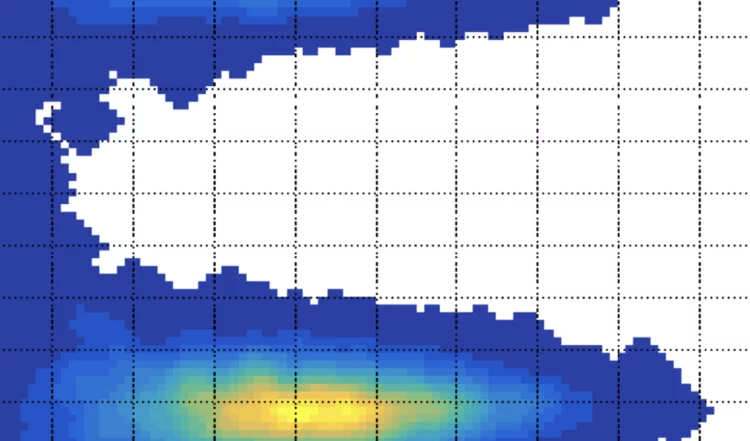
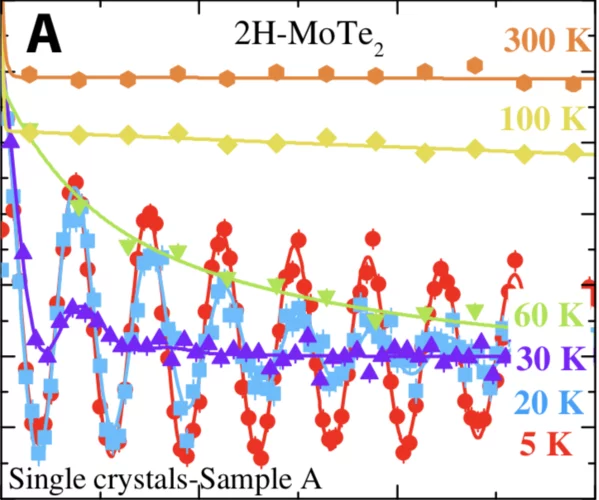
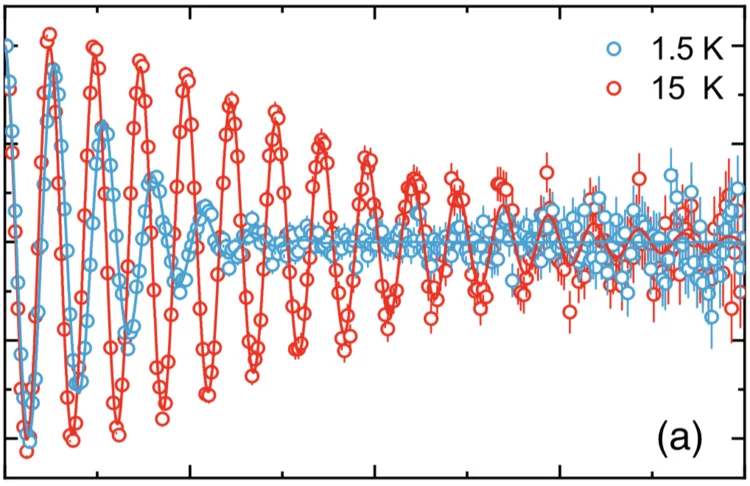
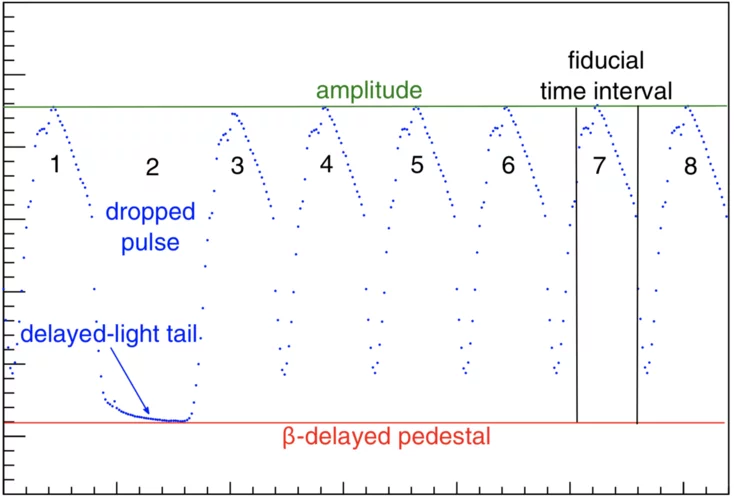
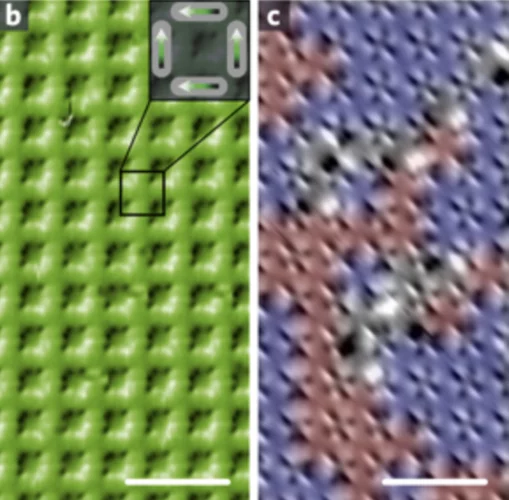
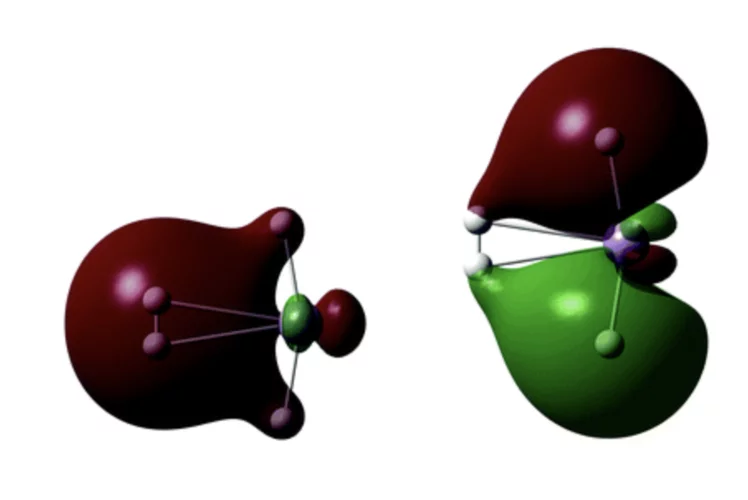
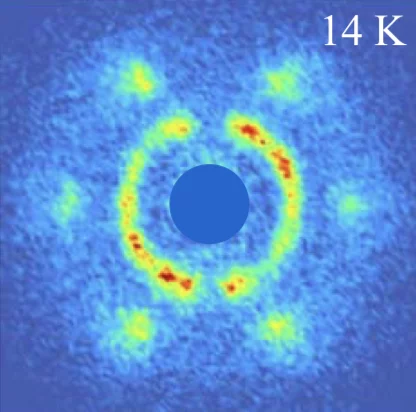
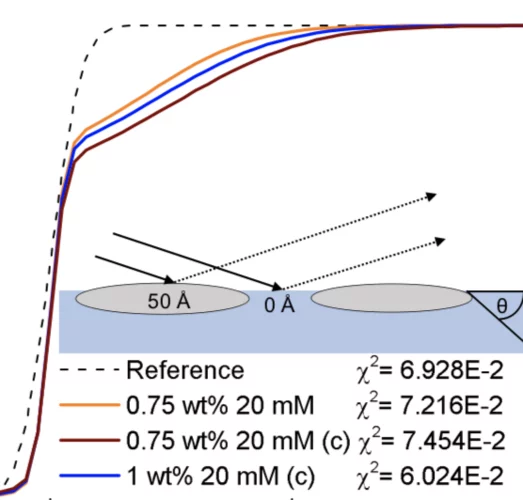
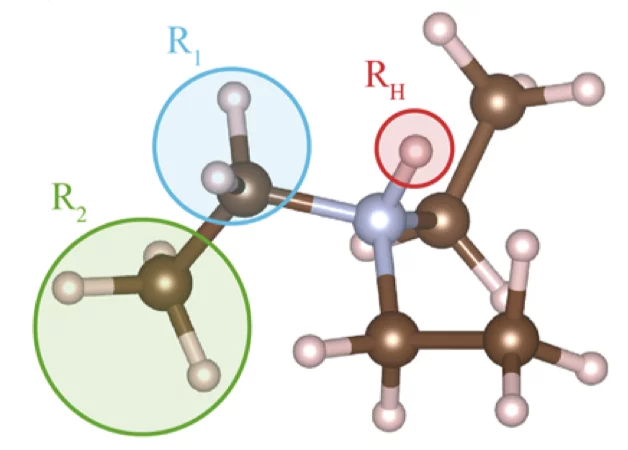
![Neutron scattering pattern of the material CsNiCrF6 showing magnetic correlations. Left: experiment; right: theory.(Image reproduced from [1].)](/sites/default/files/styles/teaser_grid_3_2_scale_xl/public/import/num/News20181028ChargeIceEN/Fig4.png.webp?itok=CTt-QW9c)
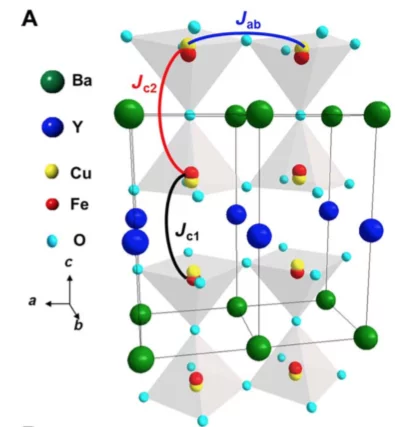
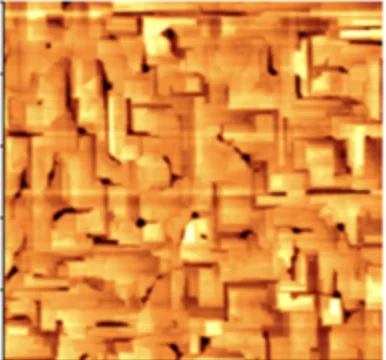
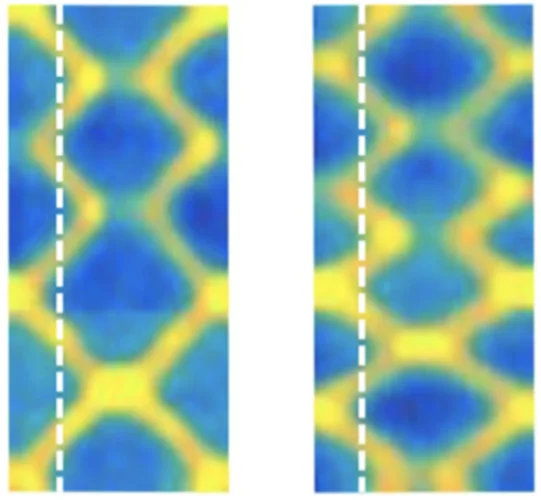
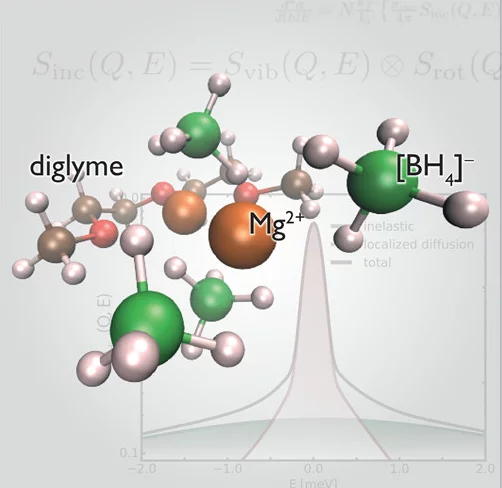
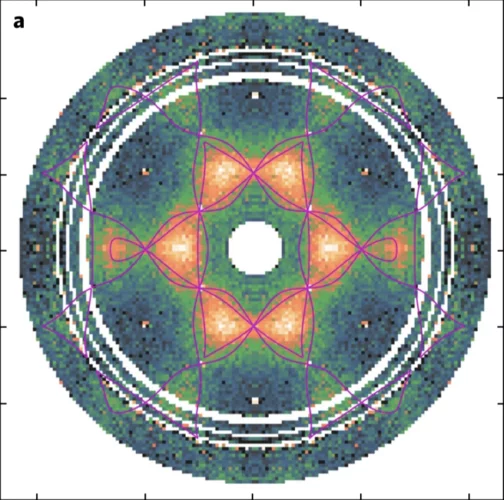
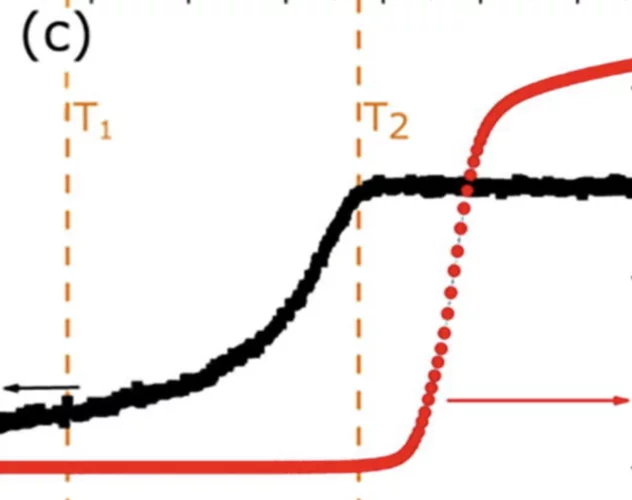

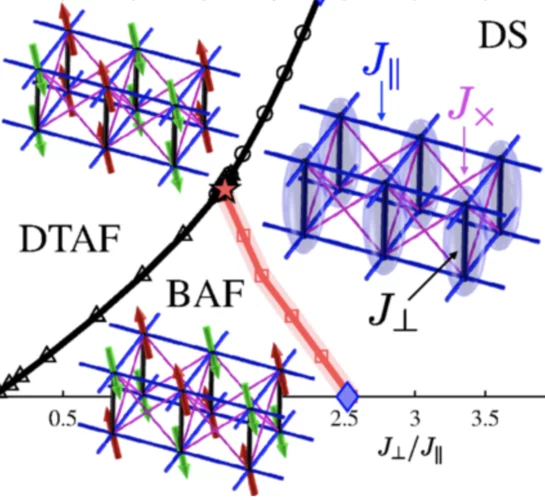
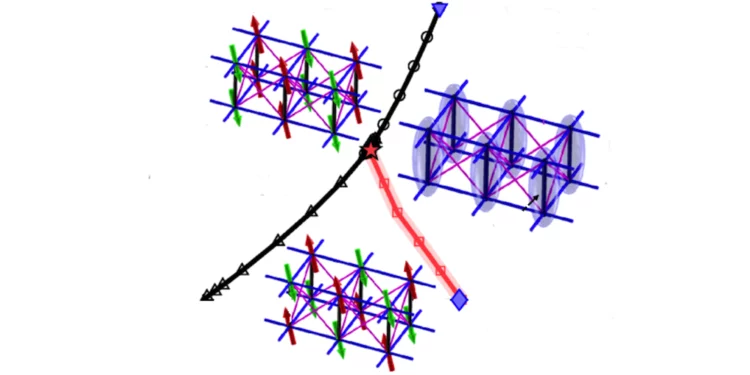
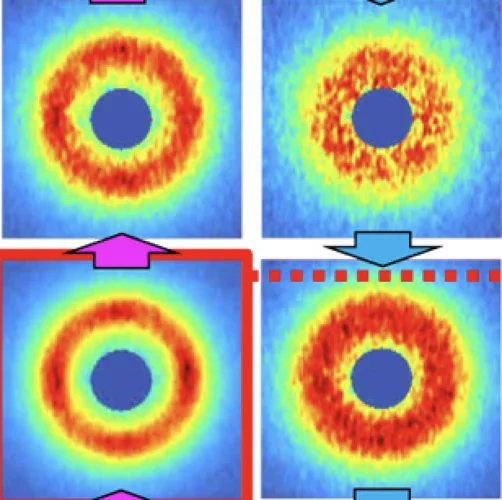
![Crystallographic structure of [CuF2(H2O)2]2pyrazine below (left) and above the structural phase transition observed at 18 kbar. The images show calculated spin-density distributions of the ground state, with spins up and down represented in cyan and green, respectively. (Image adapted from [1].)](/sites/default/files/styles/teaser_grid_3_2_scale_xl/public/import/num/News20180914PressureEN/Pressure.png.webp?itok=TwuZCxxZ)

